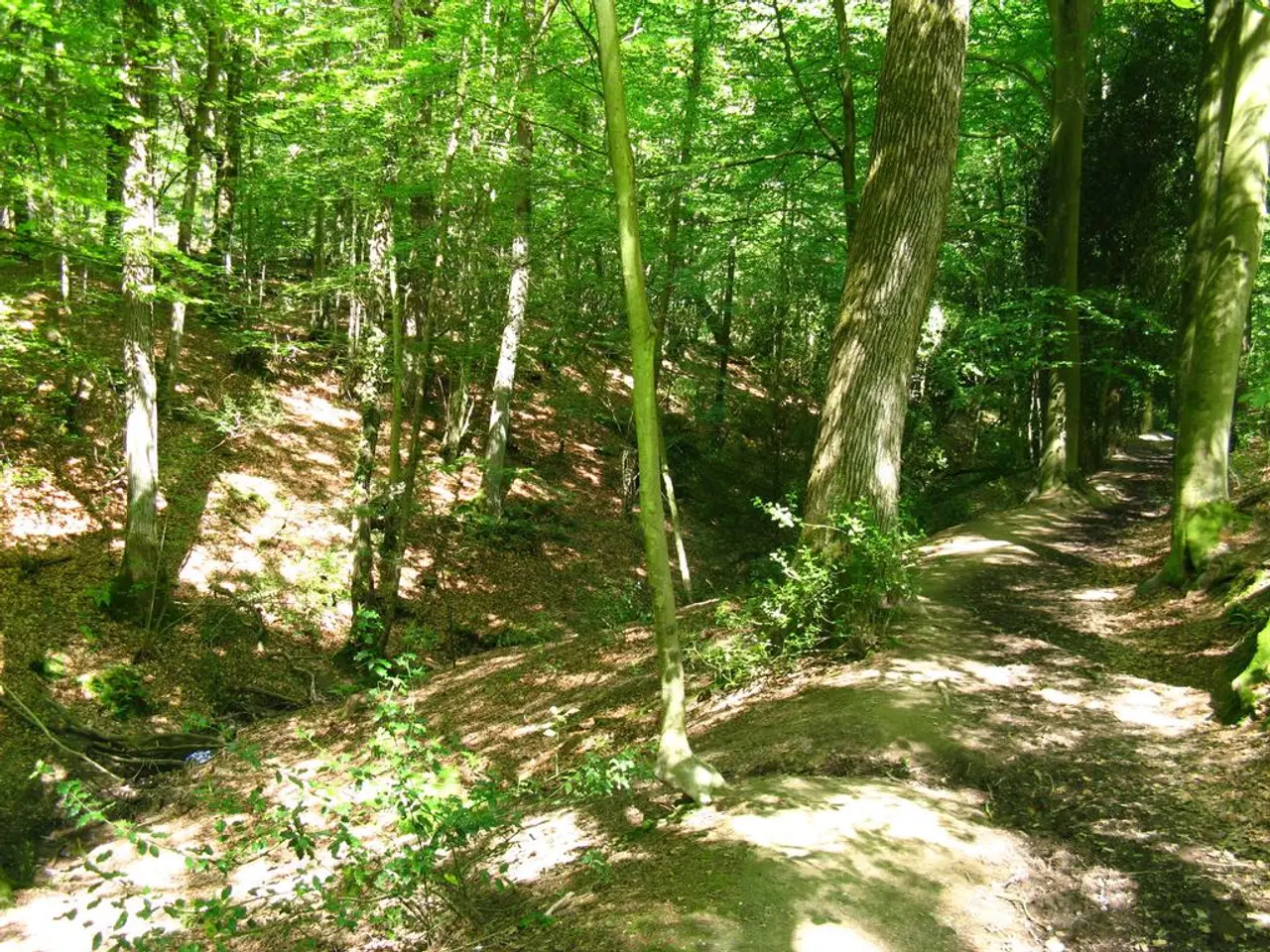Removing Tree of Heaven: Techniques for Successful Eradication (4 Strategies Detailed)
The Tree of Heaven, scientifically known as Ailanthus altissima, is a rapidly growing plant that can be found throughout the United States in USDA zones 5-8. This invasive species, first introduced to the country in the 1700s as an ornamental shade tree, has now become unwanted in 30 states due to its aggressive spreading habits.
Identifying the Tree of Heaven
This invasive plant can be identified by its tall stature (up to 80 feet), pinnately compound leaves with 10 to 40 smooth, lance-shaped leaflets along a central stem, and a distinctive offensive smell from crushed leaves or bark, often described as wet gym socks or burnt peanut butter. Female trees produce hanging clusters of single samaras (winged seeds) unlike paired maple seeds.
Impacts and Challenges
The Tree of Heaven suppresses other plants by releasing chemicals into the soil and forms dense colonies that are difficult to control. It produces high pollen levels that worsen allergies and can cause skin irritation and, in rare cases, serious health issues like myocarditis from sap contact.
Removing the Tree of Heaven
Cutting the Tree of Heaven alone is insufficient and encourages more growth. The recommended method is to first apply a systemic herbicide such as Triclopyr or Glyphosate during active growth (mid-July to early October) when the tree is transporting nutrients to the roots.
Techniques include:
- Hack-and-squirt: making small cuts on the trunk and applying herbicide directly into them.
- Basal bark treatment: applying herbicide directly to the trunk in a 12- to 18-inch solid band around the base of the tree, best for trees under six inches in diameter.
After about 30 days, when the tree shows dieback and leaves fall, cut down the tree and monitor the area for regrowth due to root suckers, which need additional treatments or physical removal. Safety precautions such as gloves and protective clothing are advised when handling the plant and herbicides.
Long-term Control
Control efforts require a multiyear approach with diligent monitoring and follow-up to prevent reestablishment. Removing seedlings and small saplings by digging can be effective if caught early, but larger established trees need herbicide treatment first to prevent vigorous resprouting.
Additional Considerations
The Tree of Heaven is the preferred host of the invasive spotted lanternfly. Do not cut or mow the Tree of Heaven as it encourages root suckers and stump sprouting. After the panicle-shaped blossoms fade, female trees produce hanging clusters of one- to two-inch samaras, or winged seeds, resembling those of maple trees.
For effective control, it's essential to target the roots with herbicides, and herbicide must be applied to standing trees, not just cut stumps. Always follow up with additional treatment and monitor the site for any surviving trees or new sprouts.
Learn more about controlling uninvited and unwanted plants in your garden. Proper timing of herbicide applications is crucial; apply between mid and late summer, when the trees are sending carbohydrates to the roots, and cut the trees in late fall through early spring after the trees begin showing symptoms of the herbicide treatment. Hand-pulling small Tree of Heaven seedlings is possible when the soil is moist, but ensure all roots are removed as even a small fragment can resprout.
In Summary
In conclusion, effective control of the Tree of Heaven requires identification, careful herbicide application, and ongoing monitoring to prevent reestablishment. The distinctive smell of the Tree of Heaven can help with identification, and safety precautions should be taken when handling the plant and herbicides due to potential health risks.
- In gardening, removing an unwanted Tree of Heaven alone may encourage more growth, so it's recommended to apply a systemic herbicide such as Triclopyr or Glyphosate during its active growth.
- For effective control, Hand-pulling small Tree of Heaven seedlings is possible when the soil is moist, but ensure all roots are removed to prevent resprouting.
- The Tree of Heaven suppresses other plants in the home-and-garden by releasing chemicals into the soil and forms dense colonies that are difficult to control.
- United States gardeners with a home-and-garden lifestyle in USDA zones 5-8 should be aware of the invasive Tree of Heaven, identified by its offensive odor, tall stature, pinnately compound leaves, and hanging samaras resembling maple seeds.





